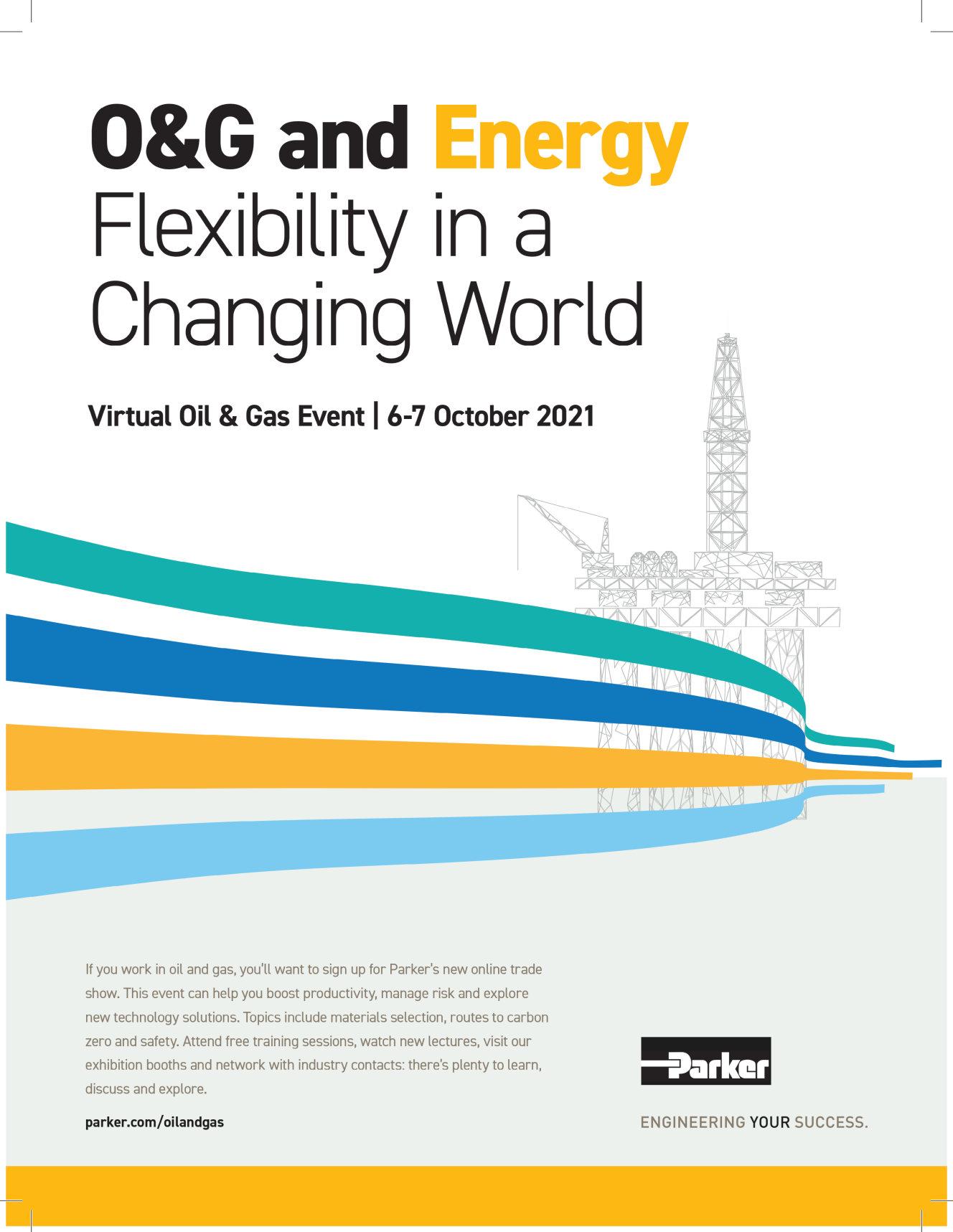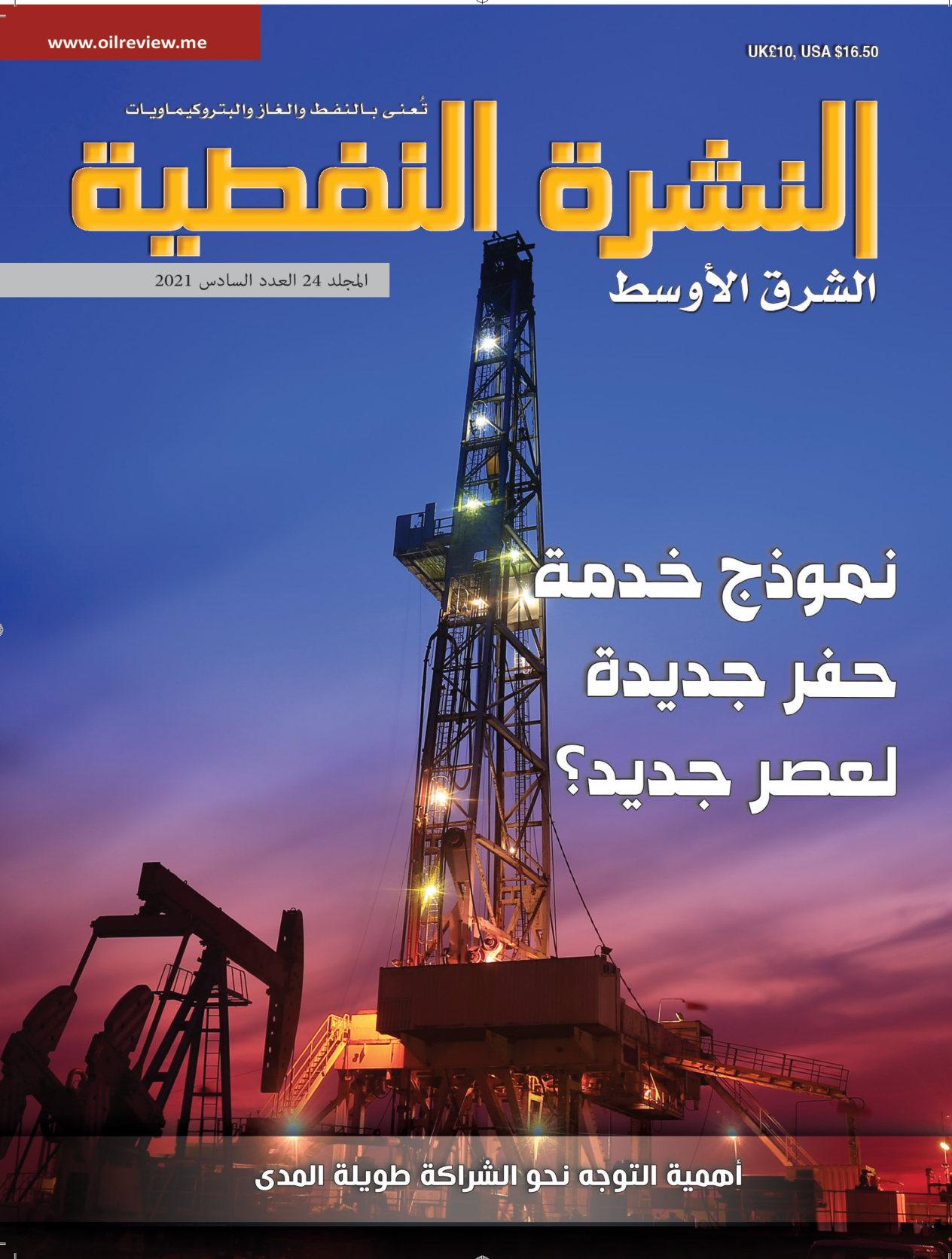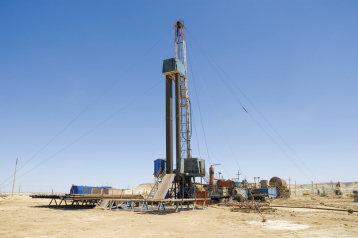
19 minute read
Industry developments
Partnership to demonstrate CCS monitoring solutions
LYTT, A PROVIDER of real-time operational insights to oil and energy operators through a fibre optic sensor and analytics platform, and SINTEF, an independent institute for applied research, are collaborating to demonstrate the effectiveness of novel technology to monitor CO2 transport and migration in storage reservoirs.
Carbon Capture and Storage (CCS) will be a vital tool for keeping global carbon emissions to a minimum and even provide net CO2 removal. A key area of focus is demonstrating the permanent effectiveness of CCS solutions.
Although CCS technology has existed since the 1980s, CCS is not being as widely or as quickly adopted as it needs to be to support decarbonisation. Onshore as well as offshore facilities need to be developed, requiring broader trust in the safety of CCS.
SINTEF and LYTT have, through their longterm collaboration, developed and validated the latter’s cost-efficient analytics technology applied to distributed acoustic sensing (DAS) of oil and gas wells. This was based on extensive laboratory testing at SINTEF’s Multiphase Flow Laboratory.
LYTT and SINTEF found tracking dynamic multiphase flow to be a key issue when monitoring the long-term effectiveness of CCS solutions. For underground storage of CO2, understanding the storage site is crucial. However, the collaborators have highlighted that following the journey of CO2 from ground level to storage, such as during injection, is also critical and can be realised through investment in innovative subsurface intelligence gathering tools.
Christian Brekken, project manager at SINTEF Multiphase Flow Laboratory, said, “CCS will play an increasingly important role in facilitating a low carbon society as the 2050 deadline draws closer. Working to accelerate the adoption of CCS is, therefore, a critical piece of the emissions reduction puzzle, and advances in monitoring will help build trust in the technology to pave the way for a net zero future.”
Nils Røkke, executive vice president Sustainability, SINTEF, added, “The CCS market must scale by the hundreds by 2050 to limit the effects of the climate crisis. Storage capacity will be needed at scale and in different geological settings – both offshore and onshore.”
Tommy Langnes, co-founder, LYTT, concluded, “The possibilities of CCS have been opened up due to innovations in oil and gas. LYTT’s offering centres on a framework of novel fibre optic sensor feature extraction and pattern recognition algorithms which have been industrially proven to help improve operational efficiency, reduce cost and manage risk. LYTT is working to develop a CCS monitoring solution to ensure the integrity and performance of CCS systems, monitor containment and de-risk the process.”
Onshore as well as offshore facilities for CCS need to be developed.
THE KELLER STANDARD product catalogue covers most areas of application for pressure measurement technology. However, there are often great benefits to optimising pressure sensors specifically for use and integration into higher-level complete systems.
KELLER’s modular product design offers great flexibility and allows customer-specific adaptations to be made without causing soaring costs – even for small production runs.
Sharing expertise to create the perfect sensor solutions
KELLER has been carrying out countless challenging projects in the field of piezoresistive pressure measurement technology for almost 50 years. Even applications that may appear trivial at first glance can prove highly complex upon closer analysis. By taking the actual usage conditions of the sensor into consideration right from the outset, we can achieve major improvements in effectiveness and durability. A mutual exchange of expertise with our customers is therefore central to our success. Sharing our knowledge is what enables us to find the best sensor solution.
The stages of creating a tailored customer-specific solution
1. Define basic sensor specifications in order to select the appropriate components 2. Assess the environmental conditions to determine the appropriate design for the intended location 3. Design the requested customer-specific solution taking all standards and laws into account 4. Assemble the electronic modules, taking into account applicationspecific customer requests 5. Configure electrical interfaces and connections 6. Custom product labelling with laser engraving or labels
The «Custom Solutions» product category on the KELLER website now features everything you need to know about the possibilities and requirements for customer-specific product solutions involving pressure measurement technology.
Image credit: KELLER AG

KELLER AG is at the forefront of piezoresistive pressure meausrement technology.
SafeSTS and Gail Thomson unveil emergency release system
SAFESTS AND GAIL Thomson have collaborated to produce a new ship-to-ship emergency release system for offshore use.
The system is designed for 'Vision Zero' crude oil ship-to-ship operations, to mitigate risks to crew at mooring stations and hose manifolds from uncontrolled breakaways.
In the oil ship-to-ship transfer industry, cargo transfer operations are currently carried out with no passive or active protection- Camlock fittings allow for a quicker manual disconnection, but problems and risks still remain in emergency disconnection situations.
The new system aims to solve loss and risk issues with a quick and automatic release solution to be utilised in emergency situations.
Utilising the flip-flap marine breakaway coupling technology, the PTX offers rapid and safe on-demand release within the marine hose transfer system, safeguarding offshore oil transfer operations against emergency scenarios.
Captain Robert Gilchrist, marine director of SafeSTS, said, "The PTX is a step-change in the STS transfer market, and this innovation supports our strategy for ‘Vision Zero' whereby the overall system protects itself against critical incident to people or the environment in the event of breakaway. "Safety is not always free, but it does not have to be expensive, and investment needs to continue into ways to reduce incidents, and the consequences of incidents, in an STS environment."
The PTX can be installed directly over the vessel's manifold drip tray, minimising the risk of spills and providing 100% leak-tight shut off following closure, protecting the environment, surrounding machinery, and operators and staff from possible damage from spills.
Gall Thomson's business development director, Fred Boufennane commented, "We are delighted to bring the PTX to market in conjunction with SafeSTS. It is yet another example of the on-going Gall Thomson research and development programme delivering solutions based on the evolution of proven technology combined with real-world experience."
The PTX’s ultra-compact system includes its own hydraulic power unit (HPU) and reset skid. "Going forwards, adoption of the PTX allows it to be demonstrated to all relevant stakeholders, from the owners of the cargo and the vessels to the local regulatory authorities, that the operator has taken all reasonable steps to ensure the highest level of safety and environmental protection.” "The PTX is exclusively offered into the offshore STS market by SafeSTS from where full details are now available," concluded Boufennane.
Image Credit: SafeSTS/Gail Thomson
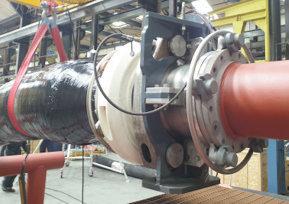
Inmarsat reports rapid levels of industrial IoT maturity in 2021
IN A NEW report entitled 'Industrial IoT in the Time of Covid-19', Inmarsat, the global mobile satellite communications leader, reveals a significantly rapid increase in the maturity level of industrial Internet of Things (IoT) usage across the oil and gas sector, especially since the start of the Covid-19 pandemic.
Respondents, which were comprised of exploration, extraction and distribution businesses, on the whole reported that Covid-19 only exacerbated the importance of IoT technologies to their operations, with many accelerating planned IoT deployments in response to the pandemic and the technical difficulties it proposed.
Inmarsat's research recorded a huge level of progress between 2020 and 2021 amongst the oil and gas sector. 74% of all business respondents reveal they have now fully deployed at least one IoT project, of which 44% achieved this in the 12-month period from Q2 2020.
Of the remaining 26% of respondents that have not yet adopted IoT, all of those surveyed confirmed they are currently trialling some form of the technology, or plan to deploy or trial at least one IoT project within the next two years.
A further 81% of the survey's respondents indicated their intention to accelerate IoT adoption in response to the challenges which arose due to Covid-19. Of this figure, 51% comprises businesses who have already accelerated the IoT adoption, with 17% planning to accelerate it within the next 12 months and 13% who intend to accelerate deployment beyond this period.
Inmarsat's market development specialist, Damian Lewis, said of the acceleration of IoT in the oil & gas industry, “The oil and gas sector has a history of innovation, and our research reveals that the pace of IoT adoption in the industry has significantly increased as a result of the pandemic. The sector is now relatively advanced in its adoption of IoT, demonstrating the importance businesses are attributing to the technology as a way to respond to both Covid-19 and wider industry challenges.
The 51% of businesses that have already accelerated their IoT adoption are less likely to state that the pandemic has negatively impacted their ability to operate, proving the link between the rise of IoT and business continuity during the pandemic. "In a sector where so much activity takes place in some of the world’s most remote and inhospitable conditions, this accelerating rate of IoT adoption reflects the need that oil and gas businesses have to increase their ability to monitor, manage and automate remotely,” added Lewis.
More than half of respondents in the sector indicated that the business and operational challenges faced during the Covid-19 pandemic have underlined the importance of the Internet of Things.

Oil and gas respondents to Immersat’s survey reported that the pandemic exacerbated the importance of IoT technologies to their operations.
Pipe for
gas applications
GAS TRANSMISSION PIPELINES, bringing gas from remote locations to market, are a major focus of the oil and gas industry, increasing the importance of short- to long-distance natural gas transportation using pipeline infrastructure. As the world’s oil and gas sector is becoming more gas oriented, the market is looking for a flexible non-metallic pipe to transport gas.
SoluForce, the leader in Flexible Composite Pipe (FCP) systems, has developed special extensions to its portfolio for a wide range of gas applications, from wet gas directly from a well, to the transportation of gas from marginal fields.
In addition to conventional high pressure flexible pipes, SoluForce also offers Gas Tight (GT) versions of the synthetic fibre-reinforced ‘SoluForce Classic’ and the high-strength steel wire reinforced ‘SoluForce Heavy’.
All types of polymers show permeation of light hydrocarbons and gas. Small volumes of gas and hydrocarbons can permeate through the polymer of a thermoplastic pipe. Obviously this is something that needs to be avoided.
SoluForce found the perfect material to stop permeation through the SoluForce pipe wall. A very thin layer of aluminium is wrapped around the inner liner pipe, resulting in the industry’s only true gas-tight high pressure flexible pipe. Furthermore, a property that makes SoluForce robust and distinguishes it from other options, is the bonded pipe structure. All layers in the pipe are chemically bonded, even the aluminium layer. Through extensive R&D, SoluForce has found a production method to chemically bond aluminium with HDPE. Therefore, even though the Gas Tight pipe system has a metallic layer embedded in the middle, it still is fully bonded and retains the corresponding benefits.
The quality and reliability of all SoluForce products is guaranteed by extensive lab testing and long-term field experience. Furthermore, all solutions are certified and verified by internationally recognised testing bodies, against all the major certifications.
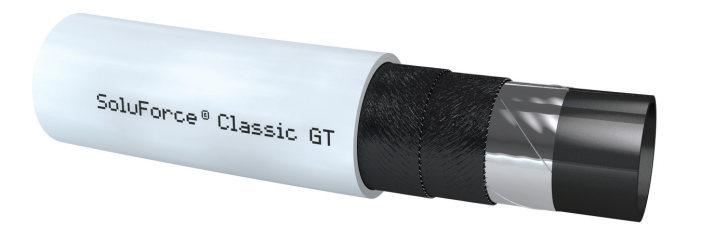
SoluForce has addressed the demand for a flexible non-metallic pipe to transport gas. The SoluForce Classic Gas Tight pipe.
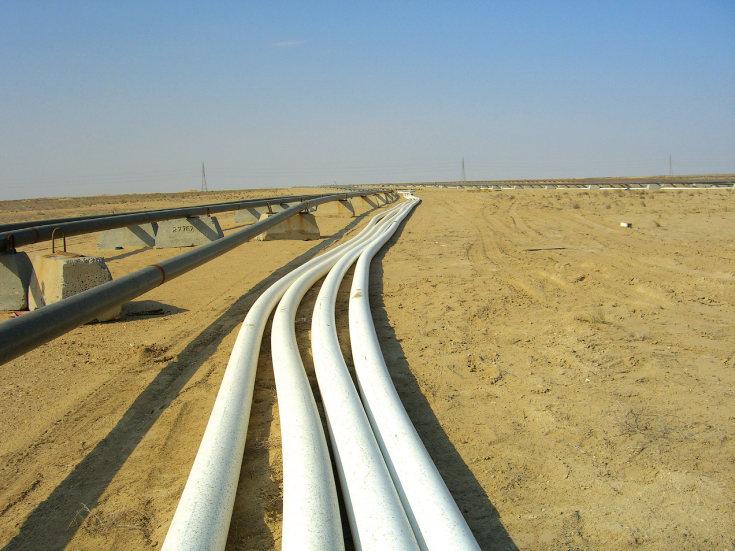
Image Credit: SoluForce
Track record
The SoluForce system has a solid track record in the oil and gas industry and has been in use since the year 2000 for a variety of applications, ranging from oil and gas utility pipelines to slurry transport in mining. Every SoluForce product is developed with a strong focus on reliability, simplicity of installation and use – but above all safety. SoluForce maintains the highest levels of quality in the design, manufacturing and testing of all its products. As a result, they meet or exceed the various recognised international standards. n
For more information visit the SoluForce website at: https://www.soluforce.com/productoverview/pipe-types/gas-tight.html Follow the SoluForce LinkedIn page at: https://www.linkedin.com/company/soluforce/
New surge relief solution
Yokogawa upgrades safety monitoring software
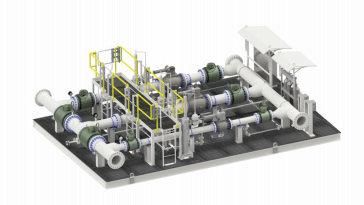
THROUGH ITS M&J Valve brand, Celeros Flow Technology has developed a patented surge relief solution that reacts to unexpected pipeline pressure surge events in a rapid and efficient manner.
This solution integrates the DANFLO surge relief valve into a fully skidded surge relief system that provides protection against dangerous pressure spikes in piping systems and pipeline surges. DANFLO surge relief valves are rated ANSI 150-900 and essentially comprise a dynamically balanced plug assembly that slides back and forth easily to rapidly open, close and throttle.
DANFLO valve technology is used in the M&J Valve rate-of-rise surge relief system. This innovative design combines a surge pressure relief valve with a predictive pressure rate-of-rise system to allow preventive action against a developing surge event. To predict the rate of rise of the system pressure, the M&J Valve surge relief solution utilises a differential pressure pilot valve. This additional pressure control is constantly monitored and, upon reaching a pre-set limit, will trigger the main surge relief valve to open. As the surge dissipates, the valve closes without slamming shut.
The surge relief system.
Image credit: Celeros Flow Technology
YOKOGAWA ELECTRIC CORPORATION has announced a major upgrade to its Exaquantum Safety Function Monitoring (SFM) software, an OpreX asset operations and optimisation solution that helps identify whether actual operating performance meets safety design targets. The new upgraded software, SFM R3.35, provides continuous monitoring and evaluation of safety data to highlight deviations or failures in plant safety system performance.
Already in use across the globe in industries such as oil and gas, SFM collects all safetyrelated data to track and analyse key performance metrics, including safety instrumented function (SIF) activations and maintenance (proof testing), independent protection layers (IPLs), and initiating causes and overrides. This new version now supports the International Electrotechnical Commission (IEC) 61511 standard, a regulatory standard for functional safety in the process industry, and includes several new features to help SFM users identify potential safety issues, optimise maintenance activities, and improve overall safety solution design.
SFM assists plant managers by identifying any potential safety issues, reducing unnecessary maintenance activities and improving the overall safety solution design.
LR and Inmarsat collaborate on remote inspection solution
LLOYD’S REGISTER (LR) AND Inmarsat have announced an industry-first collaboration between a satellite communications provider and classification society to provide a connectivity solution that will address challenges experienced during remote surveys.
The new solution uses LR Remote, a specifically engineered application for remote inspection that enables crew members to livestream video, photos and audio from on board a ship to an LR technical specialist A remote survey in action. located elsewhere. It will be empowered by Inmarsat’s certified application provider (CAP) dedicated bandwidth service called Fleet Connect, available on the Fleet Xpress digital platform.
Fleet Connect provides an uninterrupted dedicated satellite link between vessels and seafarers, offering users function-specific bandwidth that is independent of business-critical vessel operations or crew communications. With no additional communication hardware required, the separation allows LR Remote to be enabled remotely without any intervention on-site. It can increase the potential of remote surveys on vessels, with flexibility and 24/7 availability enabling surveyors to perform surveys efficiently using a blend of techniques.
This collaboration follows increased uptake in remote services throughout the COVID-19 pandemic as access to ships and assets became more challenging.
Image credit: Lloyd’s Register
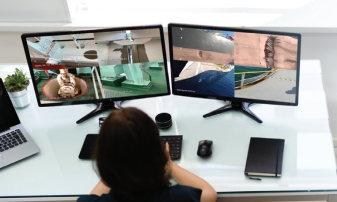
Sonardyne unveils new model of its navigation platform
SONARDYNE HAS INTRODUCED a rangetopping model of its hybrid, underwater and surface vehicle navigation platform, SPRINT-Nav Mini.
The new Navigator version extends the capability of the Guidance model introduced last year, by calculating and providing the position of a remote, autonomous or piloted underwater vehicle, or uncrewed surface vessel, in addition to its velocity, depth and attitude.
SPRINT-Nav Mini is engineered to provide accurate, precise and robust guidance, and also survey and inspection capabilities, for vehicle platforms that would normally not be able to host high-end navigation systems. These include observation-class ROVs, lowlogistic AUVs, manned submersibles, swimmer delivery vehicles and USVs operating in shallow waters.
With field-proven technology transferred from Sonardyne’s popular SPRINT-Nav product line, the Mini family combines an INS, AHRS, pressure sensor and 500 kHz DVL in a single subsea housing that is just 215 mm high, 149 mm in diameter and as little as 0.7 kg in water.
SPRINT-Nav Mini continues to work even in challenging environments, such as around surface structures and GNSS denied environments, providing a continuous stream of latitude and longitudes, orientation, velocities, depth and altitude at up to 200 updates per second to a vehicle’s primary control system. It is available in 300m and 4,000m depth options. Business development manager, marine robotics at Sonardyne, Aidan Thorn, said, “This new flagship model will enable vehicle manufacturers and operators to enjoy all the benefits of Doppler inertial navigation from a single instrument.”
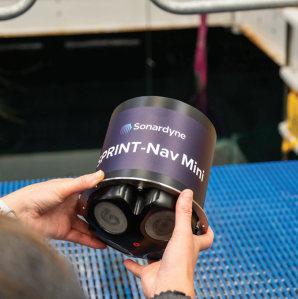
Image credit: Sonardyne
Sonardyne’s SPRINT-Nav Mini expands the horizons for underwater robotics.
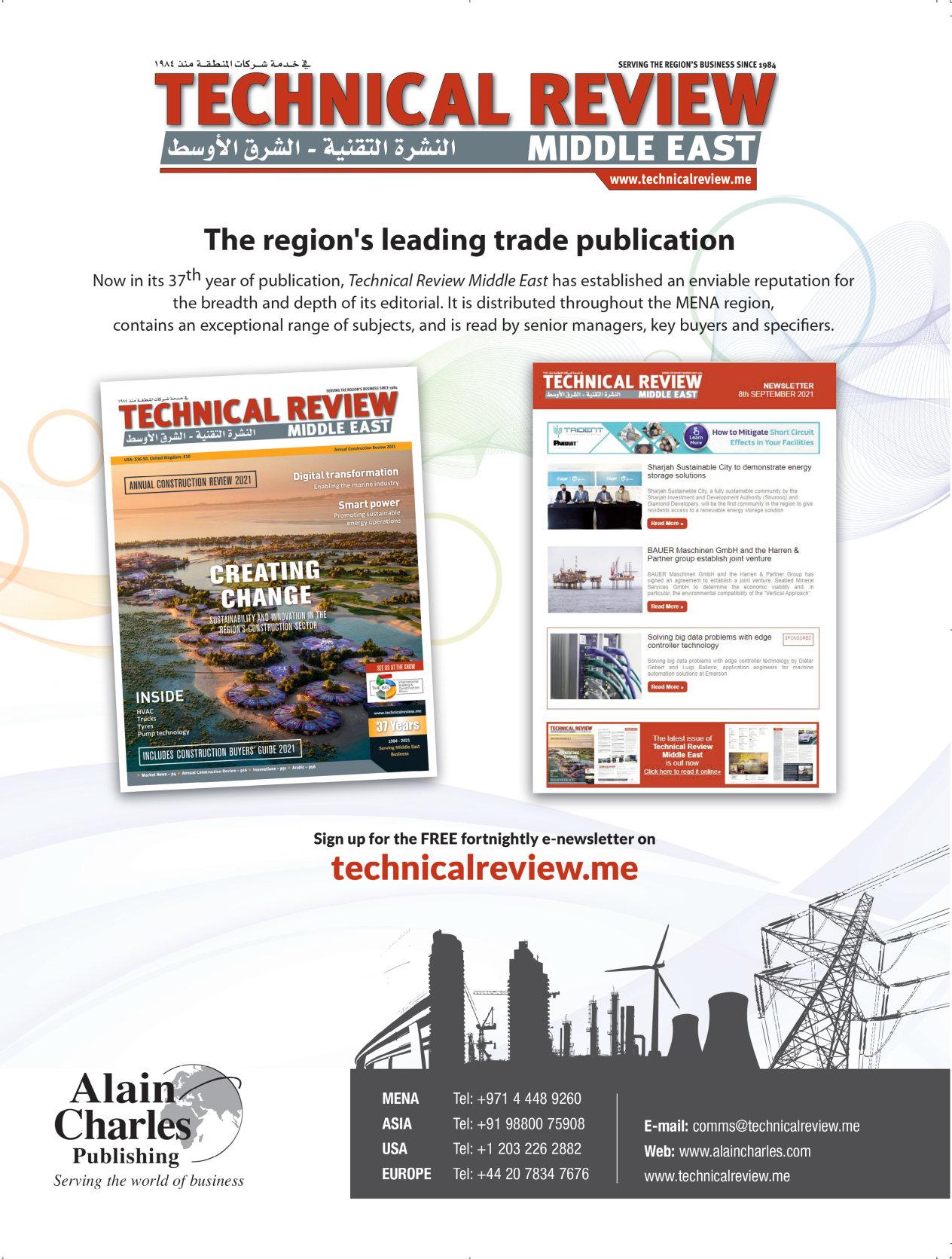
Project Databank
Compiled by Data Media Systems OIL, GAS AND PETROCHEMICAL PROJECTS, KUWAIT
Project Name City Facility Budget (US$) Status
KNPC - Clean Fuels Project - Overview
KIPIC - Al Zour New Refinery - Overview Various
Al Zour
KIPIC - Al Zour New Refinery - Package 4 - Tankage Al Zour
KIPIC - The Petrochemical Refinery Integration Project (PRIZe) Al Zour Petroleum Oil Refinery 13,800,000,000 Commissioning
Petroleum Oil Refinery 13,400,000,000 Commissioning
Storage Tanks 1,600,000,000 Construction
Polyethylene, Polypropylene 8,800,000,000 FEED
KOC - Water Management Project - Overview Various
KOC - Water Management Project - Gathering Centers 3, 4, 7, 21 South Kuwait Gathering Centre
Gathering Centre
KOC - Southeast Kuwait BS-140 & BS-150 Upgrade Southeast Kuwait Gas Processing
KOC - Jurassic Production Facilities (JPF-4 & JPF-5) - Overview Northern Kuwait Oil Production, Gas Production 681,000,000 Commissioning
245,000,000 Construction
300,000,000 FEED
1,884,000,000 Engineering & Procurement
KOC - Jurassic Production Facilities (JPF) - JPF-4 and JPF-5 Northern Kuwait Oil Production, Gas Production 980,000,000 EPC ITB
KOC - Kuwait Bay Exploration
KOC - Installation Of New Desalter Trains At GC-9, GC-10, GC-19 & GS-21
KOC - West Kuwait BS-171 Gas Sweetening Facility
KOC - Jurassic Production Facilities (JPF) - JPF-4 & JPF-5 Off-Plot Works Various
Various Exploration 904,500,000 Engineering & Procurement
Crude Oil Distillation Unit 250,000,000 Construction
West Kuwait Gas Processing
Northern Kuwait Oil Production, Gas Production 300,000,000 Feasibility Study
884,000,000 Engineering & Procurement
KOC - North Kuwait Manifold Gathering System for Gathering Northern Kuwait Gathering Centre Centers (GC) 29, 30, 31 2,500,000,000 Construction
KNPC - Mina Abdulla Debottlenecking of Coker Unit 20
KOC - North Kuwait Gathering Center (GC) 32 Mina Abdullah Petroleum Oil Refinery 93,700,000 Commissioning
Northern Kuwait Gathering Centre 1,650,000,000 Construction
KGOC - Al Khafji Gas and Condensate Export Pipeline - Phase 2 Al-Khafji - Second Pipeline Gas Pipeline Project Announced
KOC - New Strategic Gas Export Pipeline From North Kuwait To Mina Al-Ahmadi Refinery Northern Kuwait Seamless, Gas Pipeline 480,000,000 Construction
KOC - Water Management Project Gathering Centers 6, 8,11, 19
KOC - Water Management Project Gathering Centers 9, 10,20, 22
KNPC - New Local Marketing Depot At Matlaa Area
KGOC - Al Khafji Gas and Condensate Export Pipeline
KOC - Al Zour New Refinery Crude Oil Pipelines
KOC - New 48'' Crude Transit Line From North Kuwait To CMM (TL-5) Southeast Kuwait Gathering Centre
East Kuwait Gathering Centre 240,000,000 Commissioning
196,000,000 Construction
Northern Kuwait Storage Tanks 1,040,000,000 FEED
Al-Khafji Seamless, Gas Pipeline 2,100,000,000 Construction
Ahmadi Welded, Pipeline
Northern Kuwait Welded, Pipeline 845,000,000 Construction
395,000,000 Commissioning
KIPIC - Al Zour New Refinery - Package 2 - Support Process Plant Al Zour Petroleum Oil Refinery 3,800,000,000 Construction
KIPIC - Al Zour New Refinery - Package 3 - Utilities and Offsites Al Zour Offsites & Utilities
KOC - Wara Pressure Maintenance Project - Train 3 Southeast Kuwait Oil Field Development 2,100,000,000 Construction
187,000,000 Construction
KNPC - Mina Al Ahmadi Refinery Fifth Gas Train
KIPIC - Al Zour New Refinery - Package 5 - Marine Facilities
KOC - Jurassic Production Facilities Off-Plot Works Mina Al Ahmadi Gas Processing 1,500,000,000 Construction
Al Zour Petroleum Oil Refinery 1,550,000,000 Construction
Northern Kuwait Oil Field Development 254,000,000 Construction

Project Databank
Compiled by Data Media Systems
Project Focus
Compiled by Data Media Systems
Name of Client
Kuwait Integrated Petrochemical Industries Company (KIPIC)
Estimated Budget (US$) 1,600,000,000
Facility Type
Sector
Status
Storage Tanks
Oil Refining
Construction
Location
Al Zour
Project Start
End Date
FEED
PMC
Q4-2004
Q4-2021
Fluor Corporation
Wood
Main Contractor
Contract Value (US$)
Award Date
Saipem, ESSAR
1,570,000,000
Q3-2015
Background
The Al-Zour new refinery is key to Kuwait's hopes of meeting growing power demand. The 615,000 bpd facility will supply 225,000 bpd of low-sulphur fuel oil for power generation. The scheme will be one of the largest single-phase refineries ever built. The project has been tendered twice before, only to be awarded and cancelled before construction could begin. The refinery will ultimately provide low sulphur fuels to power stations. The five packages are as follows: Package 1 (Main Process Plant), Package 2 (Support Process Plant), Package 3 (Utilities & Offsites), Package 4 (Tankage), Package 5 (Marine Facilities).
Project Status
Date Status
Aug 2021 The implementation of the package faces several complications related to tanks. KIPIC is making every effort to speed up the project work.
Aug 2020 Dome roof installation for the tanks is underway.
Jul 2020 Due to COVID-19, the commissioning of the package (Package 4) has been pushed back.
Project Scope
The project scope includes: • Construction of a tank farm • 28 fixed-roof tanks • Two dry slop tanks, each with a capacity of 200,000 barrels • Two wet slop tanks, each with a capacity of 67,000 barrels • A plant fuel oil tank with a capacity of 100,000 barrels • A continuous flushing oil tank with a capacity of 10,000 barrels • An intermittent flushing oil tank with a capacity of 50,000 barrels • Four crude pipelines • Two imported fuel gas lines • Two low sulphur fuel oil lines • Road works • Associated facilities
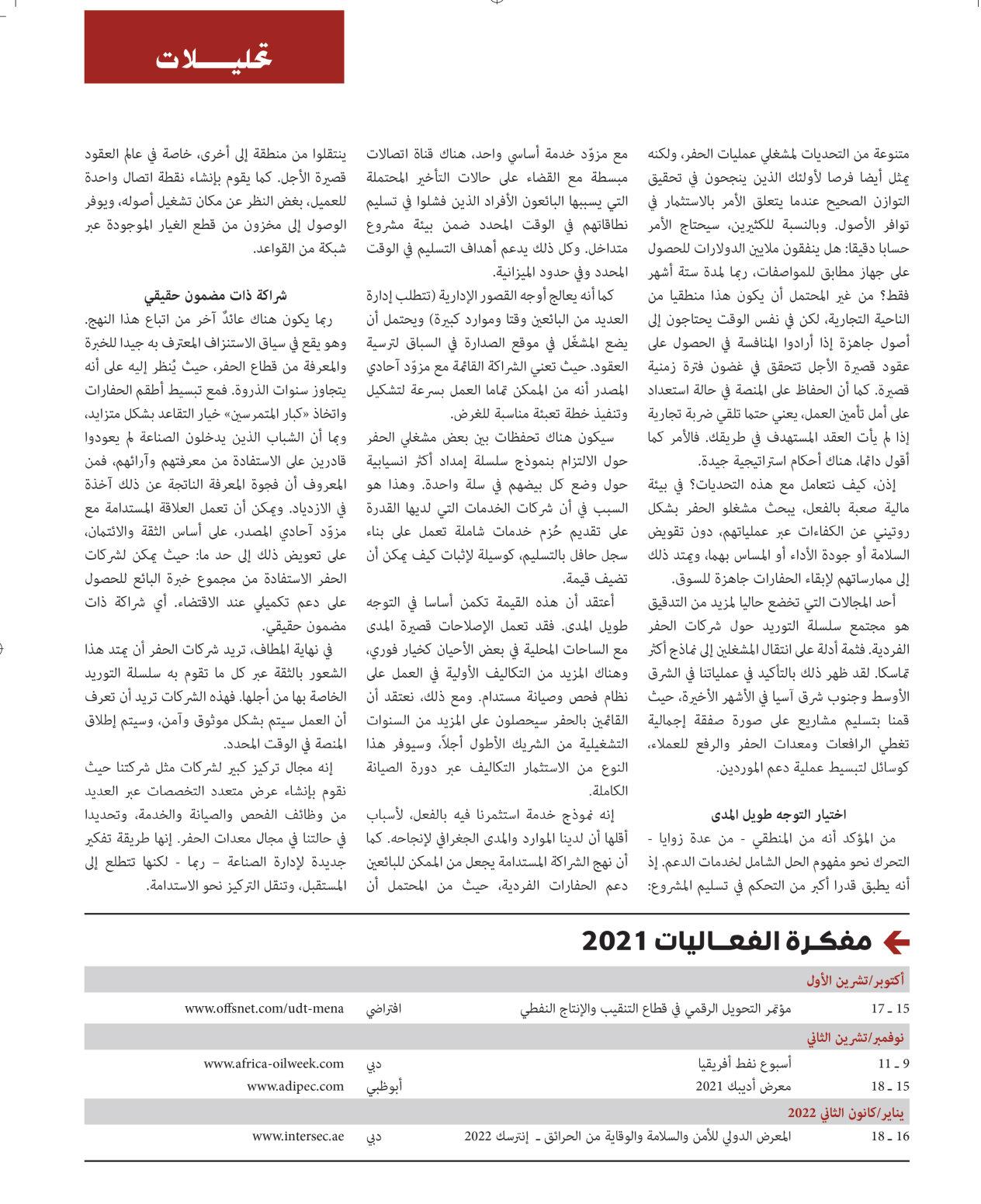
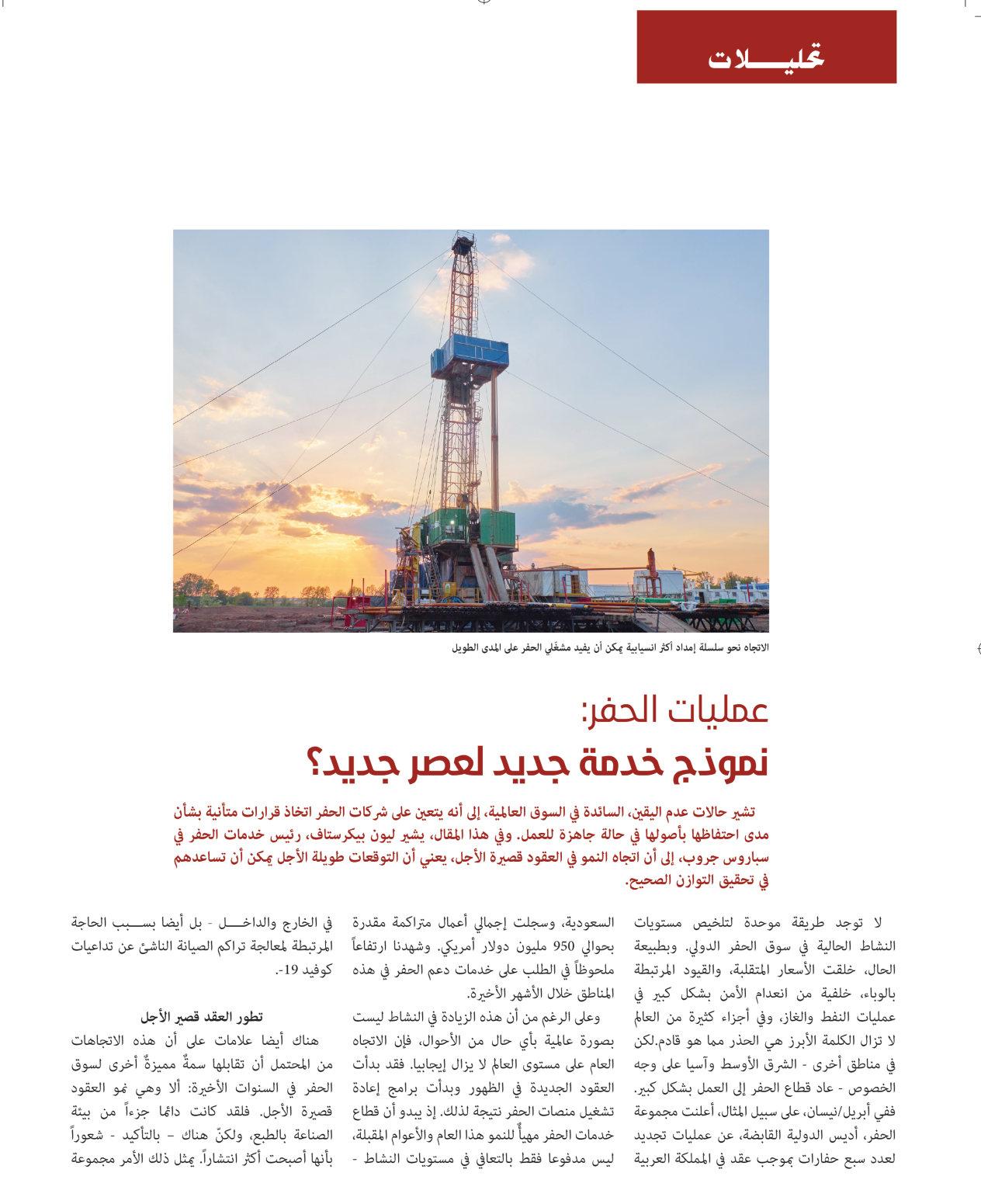
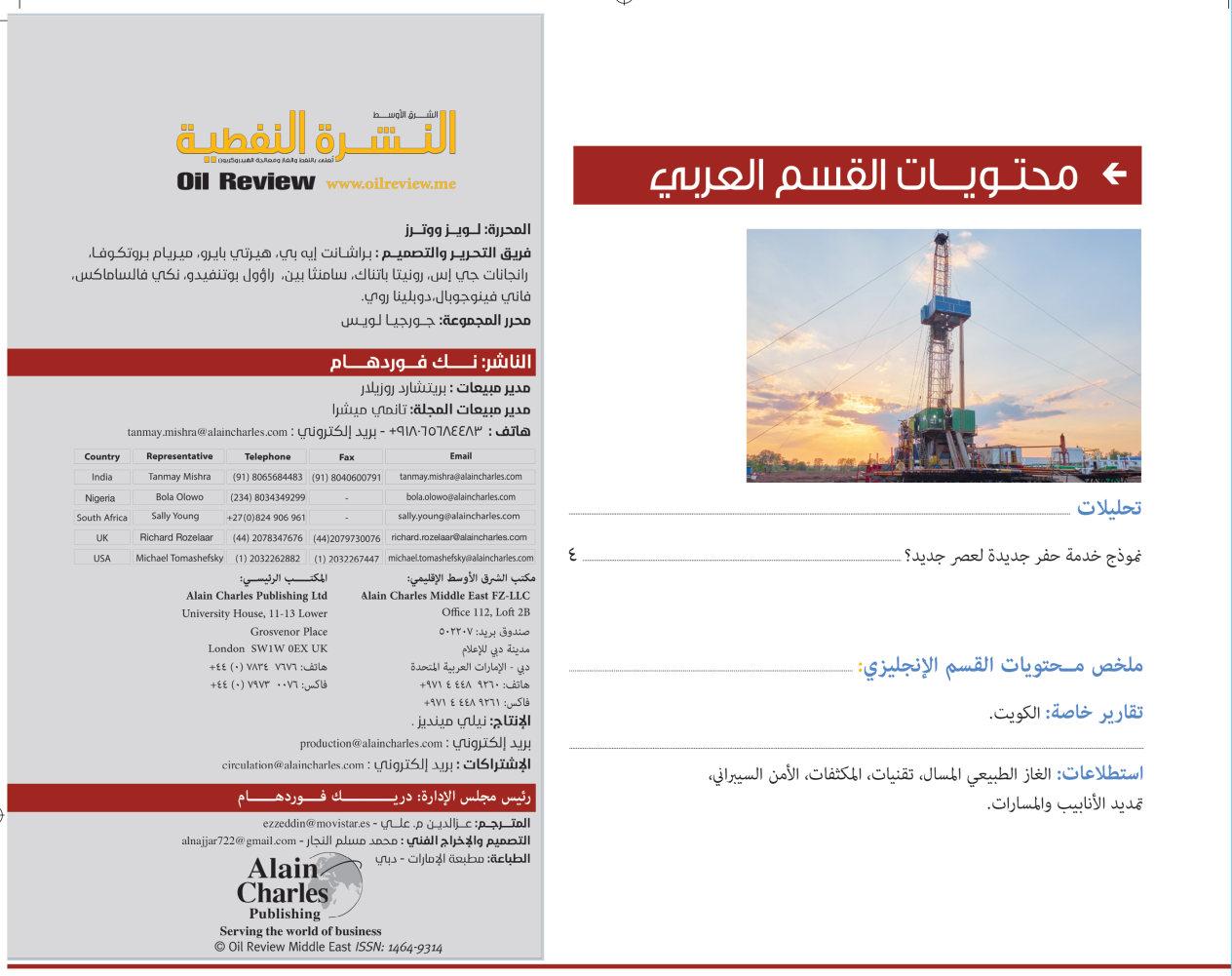
ADVERTISERS INDEX
Company......................................................................................................................................................................Page DMG World Media Abu Dhabi Ltd (ADIPEC 2021)..........................................................................................................................................................................37 DMS Global WLL...........................................................................................................................................................................................................................................45 ESTM LLC.........................................................................................................................................................................................................................................................13 Euro Gas Systems S.R.L.................................................................................................................................................................................................................................9 Expo Centre Sharjah (STEEL FAB 2021)................................................................................................................................................................................................17 Firefly AB............................................................................................................................................................................................................................................................5 Frigmaires Engineers...................................................................................................................................................................................................................................23 Keller AG fur Druckmesstechnik...............................................................................................................................................................................................................2 NETZSCH Pumpen & Systeme GmbH...................................................................................................................................................................................................25 NPS Energy DMCC.......................................................................................................................................................................................................................................11 Parker Middle East FZE (O&G and Energy 2021).............................................................................................................................................................................51 Pipelife Nederland B.V................................................................................................................................................................................................................................19 Rittal Middle East FZE................................................................................................................................................................................................................................35 Sharplex Filters (India) Pvt. Ltd...............................................................................................................................................................................................................29 Spanchem Technologies............................................................................................................................................................................................................................33 UNP Polyvalves (India) Pvt Ltd................................................................................................................................................................................................................15 Voestalpine Tubulars GmbH and Co. KG................................................................................................................................................................................................7
